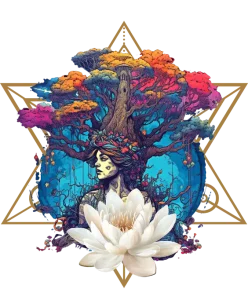Combining Old and New Ways
For thousands of years, indigenous cultures have used psychedelics as part of their spiritual and healing practices. These cultures view substances like ayahuasca and peyote as sacred tools for connecting with nature, the spirit world, and ancestors. Today, psychedelics are gaining attention again in modern society, not for religious purposes, but for mental health and personal growth.
In this article, we’ll explore how ancient traditions and modern approaches to psychedelics are coming together, and what lessons we can learn from indigenous wisdom.
How Indigenous Cultures Use Psychedelics
Indigenous people have used psychedelics like ayahuasca, peyote, and psilocybin mushrooms for generations. These plants are central to their spiritual practices, helping people connect with the earth, heal emotional wounds, and gain wisdom. Here are a few examples:
- Ayahuasca: Indigenous groups in the Amazon have used this powerful plant medicine in ceremonies for thousands of years. It’s taken in a ritual setting, often led by a shaman, to heal both body and spirit.
- Peyote: Native American tribes have used peyote, a small cactus, in religious ceremonies. The goal is often to seek spiritual guidance and healing.
- Psilocybin Mushrooms: Indigenous peoples in Mexico and Central America use these mushrooms to connect with the divine and seek answers during important rituals.
For these cultures, psychedelics are more than just substances—they are considered sacred. Ceremonies are carefully planned and guided by experienced leaders like shamans, who ensure the experience is safe and meaningful.
How Modern Society Uses Psychedelics
In recent years, modern science has begun exploring the therapeutic benefits of psychedelics, especially for mental health. Substances like psilocybin and MDMA are being researched for their potential to treat depression, anxiety, PTSD, and addiction.
Unlike indigenous use, modern psychedelic practices are mostly focused on individual healing, with a focus on mental health benefits. People are using these substances to break out of negative thinking patterns, heal trauma, and improve their emotional well-being.
What We Can Learn from Indigenous Wisdom
As psychedelics become more popular in modern society, we can learn a lot from how indigenous cultures have used them for centuries. Here are some important lessons:
1. Respect the Substance
In indigenous cultures, psychedelics are treated with great respect. They are seen as sacred tools, not just recreational drugs. When modern users approach psychedelics with a sense of respect and purpose, they are more likely to have meaningful and healing experiences.
2. The Importance of a Guide
In traditional ceremonies, a shaman or spiritual leader always guides the experience. They help participants navigate the powerful effects of the substance and ensure the journey is safe. In modern psychedelic therapy, having a therapist or guide is just as important. A trained guide can help people process their emotions and make sense of their experiences.
3. Community and Support
Indigenous psychedelic use often happens in a group setting, with the support of the community. In modern practices, having a support system—whether through friends, family, or a therapist—can also make a big difference in how positive and helpful the experience is.
4. Reflecting and Integrating the Experience
In indigenous practices, the psychedelic journey is not the end of the process. After the ceremony, people spend time reflecting on what they learned and figuring out how to apply those lessons to their daily lives. Modern psychedelic therapy also focuses on integration, where participants reflect on their experiences and work to make lasting changes in their lives.
Combining Ancient Wisdom with Modern Science
As psychedelic therapy becomes more common, there’s an opportunity to blend the best of both worlds. By combining indigenous wisdom with modern research, we can create a balanced approach to using psychedelics for healing.
For example, therapists might incorporate elements of ceremony and community into modern psychedelic therapy. By respecting both the ancient traditions and the scientific advances, we can develop safer and more effective ways to use psychedelics.
Conclusion: Finding Balance Between Old and New
Indigenous cultures have used psychedelics for centuries as a way to heal and connect with the spirit world. Today, modern society is rediscovering these substances, not for religious reasons, but for mental health and personal growth. By learning from the wisdom of indigenous people—respecting the substances, using guides, and focusing on integration—modern users can make the most of psychedelic experiences.
As we continue to explore the potential of psychedelics, blending ancient practices with modern approaches could offer the best path forward

